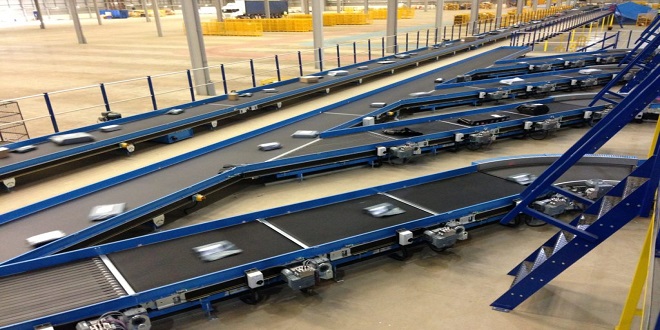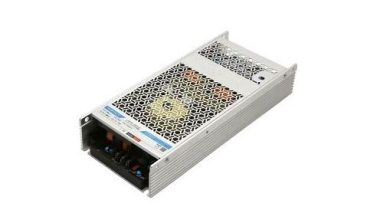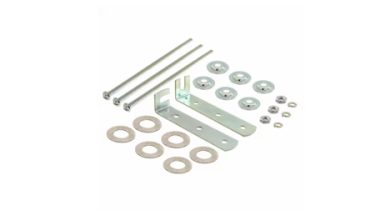In What Ways and For What Purposes Are Conveyor Belts Used?

A conveyor belt is one of the carrying mediums of a belt conveyor system, which is one of several types of conveyor systems available today. Each conveyor system requires different modules to function properly and carry out the tasks assigned to the belts.
Conveyor belts are a tried-and-true energy saver that boosts efficiency. Let’s look at how conveyor belts work, their use, and why they’ve stood the test of time.
Why do people use conveyor belts?
You can use conveyor systems for various reasons. Still, the most common are labor cost savings and increased throughput on a section of the production or transportation process, which means they can manufacture or sort and ship more products to customers faster and more efficiently.
Because less labor is required to complete the task, conveyor systems typically require less space to move items, allowing the process to run in a smaller section of the facility and free up working space. Belt conveyors are the most widely used power conveyors because they are the most versatile and least expensive while carrying a wide range of shaped objects, large or small, light or heavy.
Parts of the Conveyor Belt System
While there are many different conveyor systems, they all serve the same purpose of transporting materials. The aluminum profile, the extremity unit, and the driving unit are the three main components of all conveyor systems.
The aluminum profile in a conveyor belt system consists of the frame, belt, and supports. Conveyor systems that use a belt are typically powered by a motor, though you can also use gravity or manual force. Significantly, motorized fabric conveyor belts are ideal for industrial applications because they are more dependable and efficient.
- The frame: The system’s framework holds all moving parts together for safe and secure operation.
- The conveyor belt support: Rollers facilitate the belt to stay on track and move quickly. Additionally, they secure objects and keep the belt from sagging.
- The belt: A long stretch of thick, durable material used to transport materials from one location to another.
- The driving unit: Conveyor belts can be powered by motors with variable or constant speed-reduction gears. An efficient driving unit must constantly assist the belt with continuous running, smooth reversing, and direction changes.
- The pulleys: The conveyor belt should be designed to loop over two or more strategically placed pulleys. The pulley directs the movement of the belt and performs critical functions such as driving, redirecting, turning, tensioning, and tracking.
- The clamping straps: Clamping straps are utilized on multiple machines to hold down fixtures and work components.
Two main types of conveyor belts
Belt conveyors are classified into two industrial types: general material handling and bulk material handling. Significantly, the type of belt required to transport your goods will be determined by the function of your conveyor belt system.
General material handling belt
This entails moving materials, products, and items over short distances within or between a building and a vehicle. Also, these belts transport smaller, lighter items, such as boxes, within a factory.
Bulk material handling belt
This is the point at which the conveyor system must handle large quantities of raw goods and sensitive, heavy materials—minerals, ores, coal, sand, stone, chemicals, grains, flour, and sugar.
Bulk material handling conveyor systems and belts are helpful in industries that produce bulk materials such as food and beverage, tobacco, metals, painted goods, animal food, agriculture, ceramics, and chemicals.
Where are conveyor belts used?
Conveyors can be found in various industries, but they are prevalent in the distribution and warehouse industries and manufacturing and production. However, because conveyor systems are adaptable, you can use them in a wide range of industries due to the variety of weight, length, and items they can carry.
Conveyor belt systems are used for more than just large products and heavy materials. If you’ve ever visited the Japanese restaurant YoSushi, you’ve probably grabbed one of your plates from the conveyor belt that winds around the restaurant’s seating plan. These conveyors use a rubber material to transport rare items with small surface areas, preventing goods or plates from falling between sections.
Additionally, Belt conveyor technology is used to move people in public places, such as moving isles between airport terminals, escalators in shopping malls, transporting skiers up a slope, or moving items down the line at the supermarket checkout.
In some cases, extremely long conveyor belts are installed to transport items and goods. Dubai International Airport has the world’s longest baggage handling conveyor system, a combination of various conveyor belts and features for baggage handling systems with a total length of 39 miles.
Bottomline
A conveyor belt is a material handling system used to transport supplies, materials, and components efficiently and effortlessly, saving time, energy, and money. Additionally, conveyor belts come in infinite styles and applications—all types transport materials and goods along a constantly moving path. Conveyor belt system efficiency contributes to increased productivity, lower labor costs, and shorter lead times. It is essentially a substantial wide belt similar to a rubber band and is attached to rollers in the shape of a loop connected to rotors powered by a motor.
Revamping your menu is crucial to meeting the ever-changing demands of your customers. By updating your offerings, you can cater to new dietary preferences and emerging food trends. Keeping up with the latest dining preferences is essential to staying competitive in the restaurant industry. By adapting your menu, you can attract new customers and retain existing ones, ultimately boosting your business’s success. Whether it’s incorporating plant-based options or highlighting locally sourced ingredients, being attentive to dining trends can enhance your restaurant’s appeal.





